| Author | Message | ||
Jon Rothwell Unregistered guest Posted From: 144.137.239.224 |
Here we go again! If the worry about unleaded fuels and RR363 isn't enough for you, then the current debate on 10% ethanol in fuel should add some interest. RR advise that E10 (or petrol with 10% ethanol added) is ok to use in cars after 1986, but I've not seen any info on earlier cars. Many other manufactures however do not support the use of E10 or only have limited models for which it is suitable. It looks like E10 is coming like it or not, and I'm not sure if all petrols will have the ethanol added or if a new type of few will be sold at the bowsers alongside unleaded and premium unleaded. Does anyone have any thoughts about the effect of E10 on older RR cars. | ||
William H. Trovinger II Frequent User Username: bill_trovinger Post Number: 21 Registered: 8-2003 |
Jon; 10% ethanol has been available in the states for years and the standard since at least 1996. Other than decrease in fuel mileage I have seen nor heard of any problems and I run it (no other choice) in several pre 1986 cars. Besides my 76 SS this includes a 73 Mustang who's engine we rebuilt in 2000 which showed no unusual damage. | ||
David Gore Moderator Username: david_gore Post Number: 101 Registered: 4-2003 |
Re Ethanol, The use of fuel containing ethanol in older cars will engender ongoing debate as different makes of cars will display the widest posible variations in effects. The fuel delivery systems in some cars will encounter problems with softening/attack of the non-metallic components whereas other makes will not have this problem. All cars will suffer an automatic increase in fuel consumption due to the lower energy content of ethanol compared to petrol. Cars with metal fuel tanks containing corrosion deposits may end up with clogged fuel filters as the ethanol takes these deposits into suspension in the fuel and ultimately clogs the filter element. This problem can also arise in the service station storage tanks and an otherwise "clean" car can have a load of dirty fuel pumped into it - ideally the pump should have a filter on the delivery hose to remove the sediment before it gets to the tank [remember the Amoco "final filter"?]. I personally have an objection to fuel containing ethanol as the pump price is not reduced commensurate with the increase in fuel consumption to give no effective increase in running costs. | ||
William H. Trovinger II Frequent User Username: bill_trovinger Post Number: 23 Registered: 8-2003 |
David; I whole heartily agree with you not only does the operating cost go up but also I believe that the pollutant level is also increased. I noticed a 16.5% to 21% decrease (depending on weather conditions and vehicles) when we where forced to switch. They claim that the ethanol reduces pollutants by as much as 10%. I am no mathematical genius however, if I pollute 10% less per gallon of fuel but use 20% more fuel to go the same distance am I not creating more pollution? I hope you have better luck with your reformulation then we have had here. | ||
David Gore Moderator Username: david_gore Post Number: 102 Registered: 4-2003 |
Hi Bill, I have had personal experience with the US fuel blend during my visit last year when the fuel consumption of our rented car was at least 20% less than the consumption of an equivalent car here fitted with the same capacity engine and similar body weight - the performance was nothing to write home about either very sluggish and very poor throttle response. I converted US gallons to litres to make sure the comparison was valid - I thought the problem might be a clogged air cleaner so checked this and it was OK. Exhaust was OK with no trace of smoke so only explanation was fuel quality. Unfortunately, ethanol additions to fuel has become a political issue in Australia with lots of pressure group involvement so we will get the best decision money and payback can buy!!!!! (Message edited by david_gore on September 12, 2003) | ||
Jon Rothwell Unregistered guest Posted From: 144.137.239.224 |
The way this debate is going an LP gas conversion is looking better all the time. You might lose some power but at least it is clean and won't damage your car!  | ||
Patrick Lockyer. Grand Master Username: pat_lockyer Post Number: 1124 Registered: 9-2004 |
Time of year again for the MOT, fired the old girl up and thought I would switch over to petrol for a while. Problems so back to LPG car sailed through the test with no movement in joints using the new shaker plates, no advisories needed great. 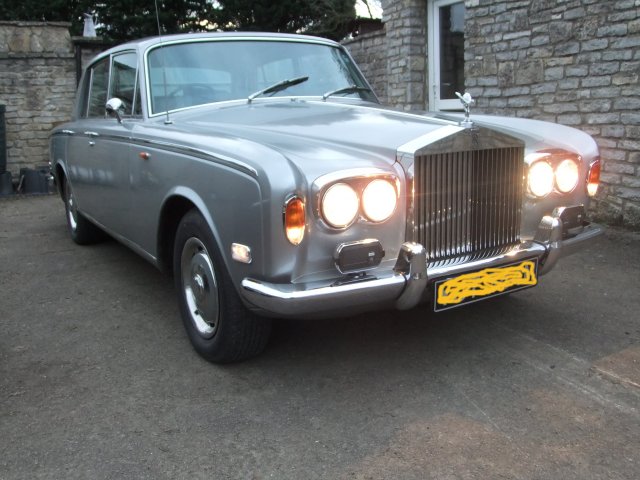 | ||
Patrick Ryan Grand Master Username: patrick_r Post Number: 1253 Registered: 4-2016 |
Great result Patrick. Thoughts on the problems running on Petrol? Great looking Shadow mate. | ||
David Gore Moderator Username: david_gore Post Number: 2476 Registered: 4-2003 |
Stale fuel??? Does the UK have different fuel blends for summer and winter as we have here? I suspect Pat might have old fuel - I understand the tank life of the modern blends is limited as explained below: "According to Shell Australia’s Technical Advice Centre Manager, Warren Scott, you can generally store fuel in a sealed container for around six months before it starts to deteriorate. This assumes it’s kept relatively cool and away from direct sunlight. “But if the container is not properly sealed or it’s repeatedly opened, [fuel] will start to evaporate and you lose some of the light components in the fuel,” Mr Warren says. Those light components include highly important butane. As these components are lost, the fuel loses its volatility. Mr Warren says this makes the car difficult to start. In warm conditions, fuel is especially prone to oxidisation which causes lacquer and gums to form. As a result, the fuel turns dark in colour, loses its clarity and smells like paint stripper. Gary Whitfield, Senior Fuel Chemist at BP Australia, says that in the right conditions, fuel can last up to 12 months. But once the container is opened, the fuel will start to degrade. “Once the seal is broken, a vapour space is formed in the container and the fuel will start to deteriorate more rapidly,” he says. Okay, so what about fuel that’s left in your car’s tank for a long period of time? Mr Whitfield claims fuel in a car’s tank can last for up to four weeks before it becomes considerably denser. When this happens, the engine is effectively over-fuelled (without any change in injector pulse-width) and there’s an increased chance of carbon deposition onto spark plugs and inside the combustion chamber. This can cause driveability problems such as stutters and misses. “Regular unleaded fuel will lose a small amount of octane over time but in our low-sulphur and high detergent Ultimate fuel it might increase very slightly. It might increase 1 RON in four weeks – but it’s not something I’d bother chasing,” he says. “Keep in mind that typical variation in BP Ultimate is 98 – 100 RON while normal unleaded ranges between 91 – 93 RON.” Mr Warren says that in most cases, it’s only when fuel is left in the tank for several months there’s the risk of engine damage. This is much more likely to occur in cars running dual LPG/petrol systems. “By this time the fuel will have gone dark and gummy and can clag the fuel pump, filter and injectors,” Mr Warren says. It can also leave a lacquer deposit on the inside of the fuel tank which is difficult to remove. In addition, it’s important to be aware that fuel brews – specifically fuel volatility - varies on a month to month basis. Standards vary from state to state but, generally, volatility is reduced during summer months to reduce evaporative emissions. Mr Whitfield says this typically makes the engine slightly harder to start but there is no change in octane. Lachlan Riddel, proprietor of Gold Coast based tuning company ChipTorque, frequently dyno tests cars which have not previously been driven for several weeks. “On the fuel mix we have in Queensland, I think fuel in a car’s tank is starting to go off in around three weeks,” Mr Riddel says. “We can tune a car, put it away for three of four weeks, come back to it and it will be either closer to detonation or less likely to make the same power. “I think local fuel is brewed to reduce evaporative emissions in warm weather and, maybe because of that, fuel really goes crappy in eight to ten weeks. By that stage, the fuel is extremely prone to detonation.” Interestingly, Mr Riddel hasn’t noticed the engine becoming harder to start but the effect on octane is pronounced. Similarly, the General Manager of Melbourne’s Advanced Vehicle Operations, Steve Coates, believes fuel tends to go off in a car’s fuel tank quite quickly once it’s a couple of weeks old. “After a couple of weeks not driving a car, I find that it will be closer to detonation than it was at the time of tuning on the chassis dyno,” he says. “And the brand of fuel seems to make a difference as well – I find that Mobil and BP products are probably the best after being stored but Shell Optimax is really good when it’s new." Clearly, there are some important factors to keep in mind when storing fuel in a container for several months or when parking your car for a few weeks. Our recommendation is not to run the engine at high load with fuel that’s been in the tank for any more than three of four weeks and it’s a good idea to add at least 25 percent fresh fuel to the tank every few weeks. This will help ensure there are no fuel-related driveability problems or detonation and will reduce the chance of lacquer building up inside the tank. " * | ||
Patrick Lockyer. Grand Master Username: pat_lockyer Post Number: 1127 Registered: 9-2004 |
Patrick the problems arrive through not using petrol. I start and run on LPG and so after over a year of not using the petrol thought I would give the system a good airing. First the pumps did not work, contacts had corroded. When cleaned and working the next fault was one of the floats sticking once cured all seemed ok. Turn engine off after a run, ten minutes later go to start car still on petrol will it start as before no, after some fast cranking with the Lucas starter it fires up. Cause possible Ethanol now in the fuel with its failings. Fuel going stale in a shorter period. All is ok running on LPG. My plan after speaking to NGK technician is to use a plug that produces a greater spark with less loading on the coil firing up the ethanol type fuel now used. The NGK no 2 plug was produced for LPG but will it help with this problem, we will see. http://ngkntk.co.uk/wp-content/uploads/2011/04/LPG-with-table-2013.04_LOGOS.pdf 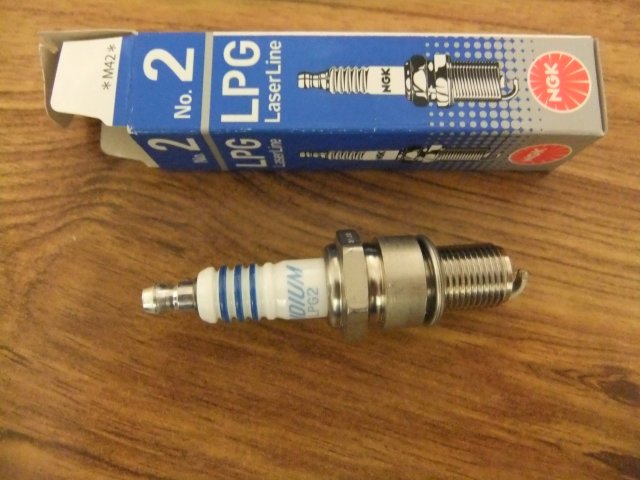 | ||
Patrick Lockyer. Grand Master Username: pat_lockyer Post Number: 1128 Registered: 9-2004 |
David just seen your posting I will read with great interest. | ||
David Gore Moderator Username: david_gore Post Number: 2477 Registered: 4-2003 |
Patrick, Petrol with ethanol sold in Australia is notorious for absorbing moisture from the humidity in the air, breaking down and causing water build-up in the bottom of fuel tanks [resulting in water pick up when fuel levels were low and corrosion of steel fuel tanks]. This is one of the reasons plastic fuel tanks were quickly adopted coinciding with the mandated sale of E10 fuel. The greatest con job of all is the pricing of E10 fuel; it has 10% less energy than pure petrol yet is only 3% less in price. The latest tactic has been to rate E10 as 95 octane based on the ethanol addition. I have not used this fuel to be able to comment on any variation in fuel consumption when compared with pure petrol but the original E10 formulation increased consumption by 5 to 10% depending on the ability of the engine management system to adapt fuel injection settings for optimum efficiency and lowest fuel consumption. Lucky for me, I switched to diesel rather than petrol vehicles after E10 was introduced and our current vehicles are a well-travelled Toyota 4Runner [Surf in the USA] 4WD and my partner's VW Eos. This is a particular problem for marine engines using petrol as a fuel as off-shore "failures to proceed" due to water-contaminated fuel were experienced immediately after the E10 [10% ethanol] fuel was released. Our local country service station was granted an exemption from having to carry E10 fuel for safety reasons as a large percentage of their fuel sales were for boats with outboard motors used for off-shore fishing and the nearest marine rescue service was at least 30 minutes away by high-speed off-shore recovery craft in good conditions and considerably more when the conditions are adverse. * | ||
Patrick Lockyer. Grand Master Username: pat_lockyer Post Number: 1130 Registered: 9-2004 |
Thanks David as always, I will change the fuel filter and see what water has collected. I will drain and refill the tank with Shell's V-Power Nitro+ and see the effect. Then fit the NGK plugs In the end I will drain the tank carbs etc and fill with some paraffin and just run LPG. | ||
Patrick Lockyer. Grand Master Username: pat_lockyer Post Number: 1131 Registered: 9-2004 |
David just seen an old topic on Ethanol http://au.rrforums.net/forum/messages/17001/670.html?1063408491 maybe we could have this topic added there. | ||
David Gore Moderator Username: david_gore Post Number: 2479 Registered: 4-2003 |
Patrick, Thanks - have transferred the relevant posts for continuity. | ||
Patrick Lockyer. Grand Master Username: pat_lockyer Post Number: 1133 Registered: 9-2004 |
Filled car up with V-POWER still takes longer to start. Will fit plugs and look at fuel filter when hoist is free. Brakes sticking on my other one so stuck on hoist.  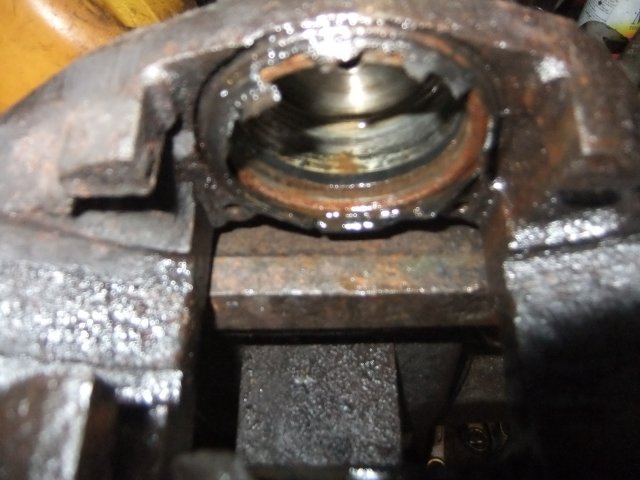 | ||
David Gore Moderator Username: david_gore Post Number: 2484 Registered: 4-2003 |
Patrick, Have you fitted the E10 upgrade kits from Burlen for the SU fuel pumps and carburettors??? http://www.burlen.co.uk/ The original pre-ethanol fuel seals and diaphragms reportedly break down when exposed to E10 fuel. * | ||
Patrick Lockyer. Grand Master Username: pat_lockyer Post Number: 1137 Registered: 9-2004 |
. | ||
Patrick Lockyer. Grand Master Username: pat_lockyer Post Number: 1138 Registered: 9-2004 |
Hi David, no have not fitted any upgrade kits, thanks for the info. Looks like they are going into competition with Holly with injection hidden within the carb. http://sucarb.co.uk/news/ | ||
David Gore Moderator Username: david_gore Post Number: 2485 Registered: 4-2003 |
Patrick, I am certain we have found the cause of your problem running the Shadow on petrol instead of lpg. When E10 was mandated here, all R-R/B owners with SU carburetted engines were advised to fit the SU upgrade kits for both the fuel pumps and carburettors because the original seals and diaphragms were incompatible with ethanol. * | ||
Patrick Lockyer. Grand Master Username: pat_lockyer Post Number: 1179 Registered: 9-2004 |
Update on the fitting of the NGK iridium plugs, seven fitted in 30mins the last plug to be removed and fitted took me a good +hour. This was due to the LPG water take offs for the vaporizer between the bulk head and hydraulic reservoir. So job complete and then to start with the same fuel filter and petrol, Engine fired up instantly and ran smooth on idle and normal driving range. David I will still change the fuel filter and do a run on LPG to see how it starts cold and hot. Will keep an eye on the carbs for leaks etc running with ethanol Most amazed with the plugs though, costly but well worth it. | ||
John Beech Prolific User Username: jbeech Post Number: 265 Registered: 10-2016 |
Patrick, Did you change the gap? On advice of NGK, I left them alone despite wanting to close the gap a bit because Tootsie still has points instead of an electronic ignition. -- John wondering if there are any special tricks for installing the Pertronix ignition module | ||
Patrick Lockyer. Grand Master Username: pat_lockyer Post Number: 1181 Registered: 9-2004 |
Hi John no they advised to leave as the pre set figure of 0.80mm as the main use will be on gas. All I did was to check that that was the same amount on every plug. This morning I removed the fuel filter, easy to remove with the old oil sprayed over the years but what a black mess. 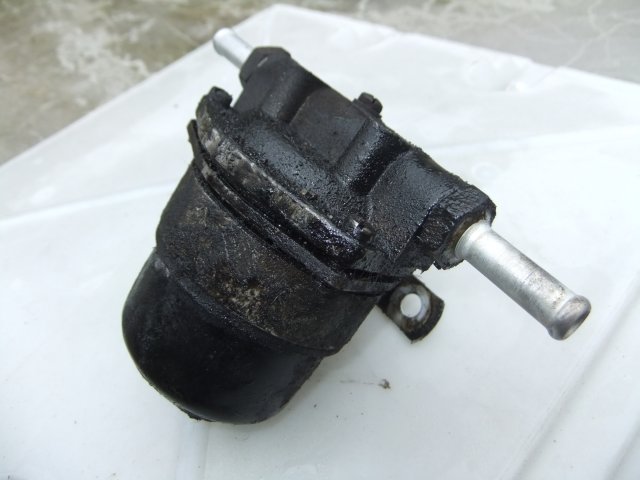 I cleaned it up before disassembly  Seen worse but pleased to know it is now done. 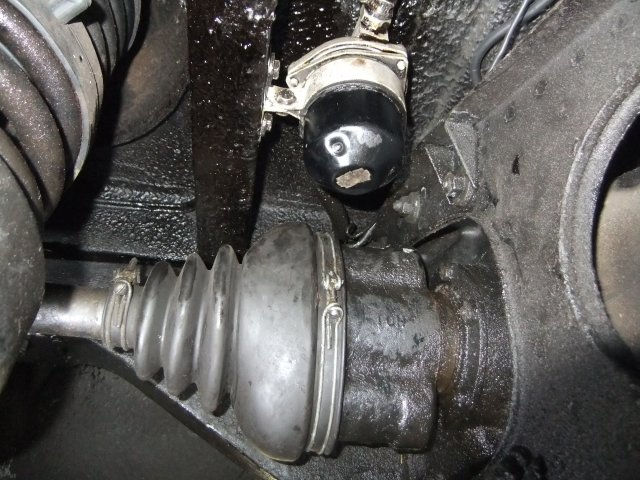 Job done and now to respray with old oil for easy removal next time. The filter is marked Crosland 444, I only have one left! Next is to do an oil change even if the oil is clear running with LPG. The additives break down over time. | ||
David Gore Moderator Username: david_gore Post Number: 2492 Registered: 4-2003 |
Patrick, There is a direct equivalent filter element available from Wix filters [Wix Filters 495-33051] http://www.wixfilters.com/Lookup/PartDetails.aspx?Part=60813 These are available from USA suppliers and there may be a UK distributor for WIX. http://www.summitracing.com/parts/WIX-33051/ * | ||
Jim Walters Frequent User Username: jim_walters Post Number: 96 Registered: 1-2014 |
David, the filter you have linked to goes in at the float bowls. It is much too small to work in the main filter. I have searched and searched but still have not found a replacement for the Crosland 444. If anyone has please let us know. SRH8505 SRC18015 SRE22493 NAC-05370 www.bristolmotors.com | ||
Brian Vogel Grand Master Username: guyslp Post Number: 2240 Registered: 6-2009 |
David, For clarity's sake it's important to note that the Wix 33051 (and, for residents of the US or anywhere NAPA auto parts does business, the NAPA 3051) are substitute carb fuel filters, not the main fuel filter that Patrick shows in his photographs. I have been asking for years and have yet to have anyone identify a replacement for the Crosland 444 that goes in that "bucket" style filter holder beneath the car. Here are the images I have from when I was installing the last Crosland 444/CD 4299 filter I owned: 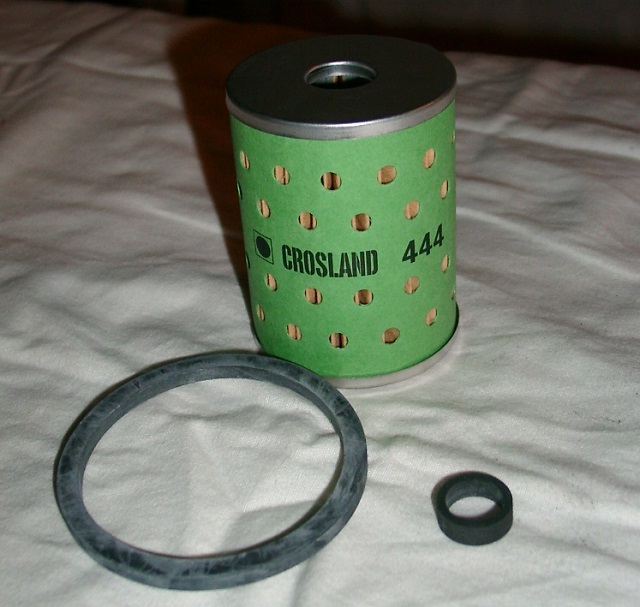 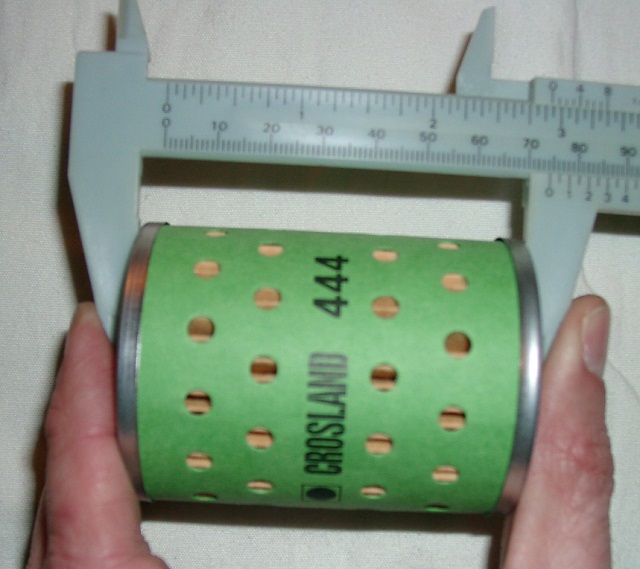 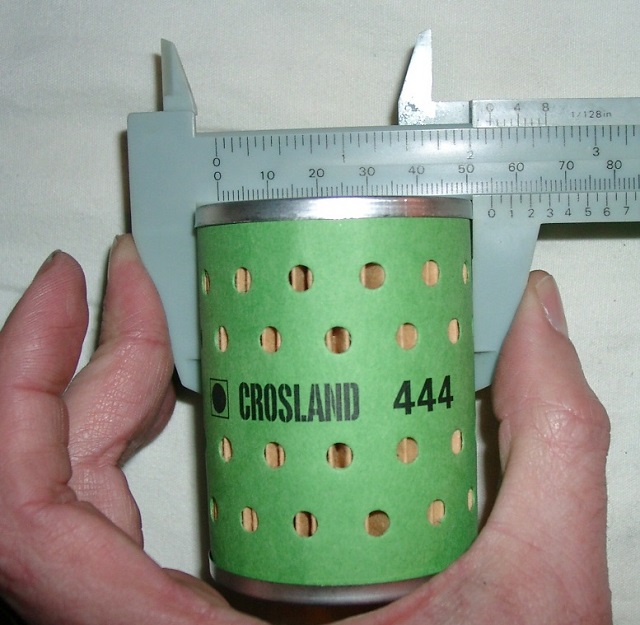 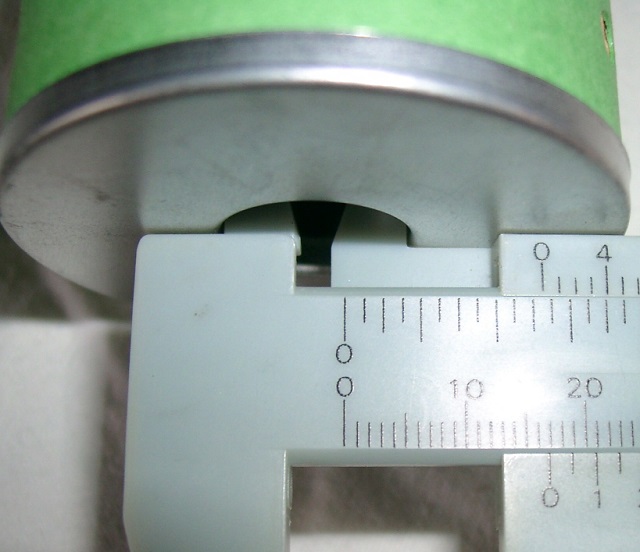 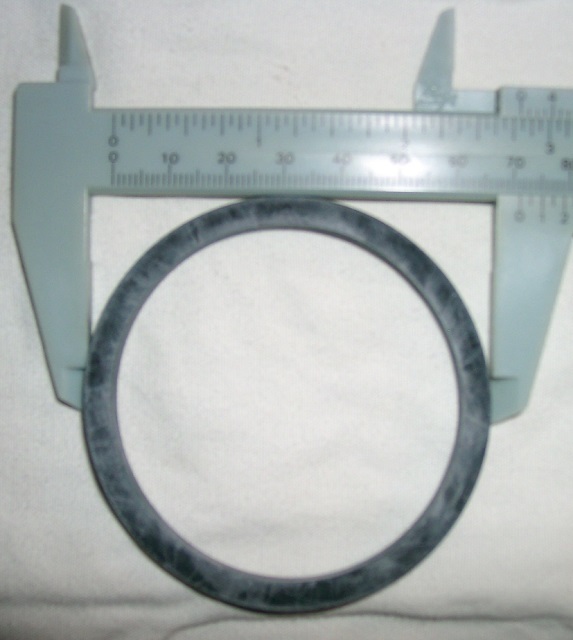 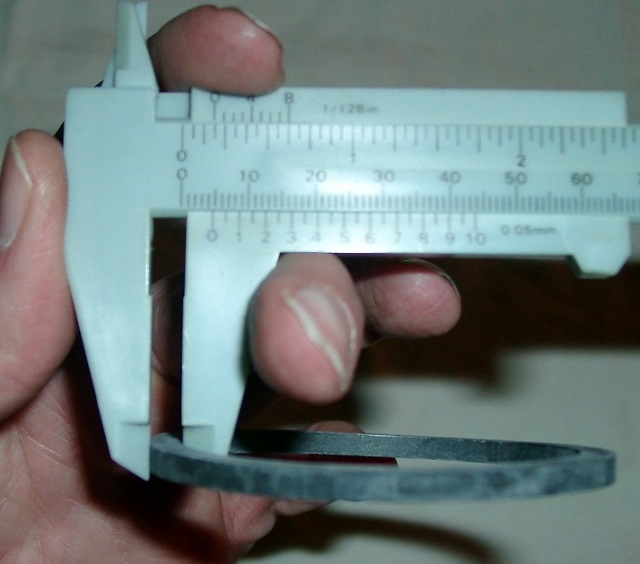 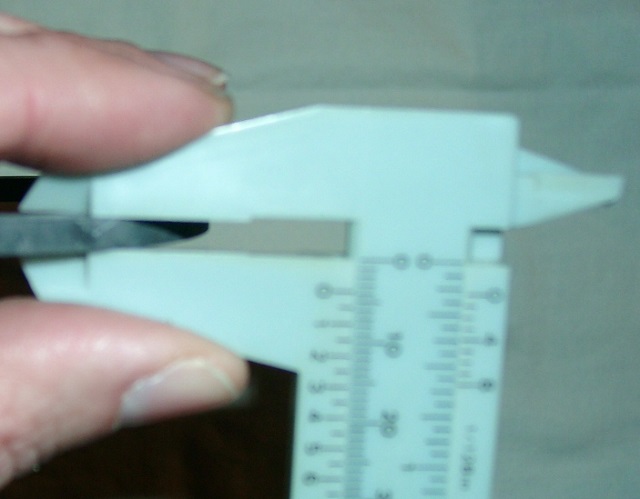 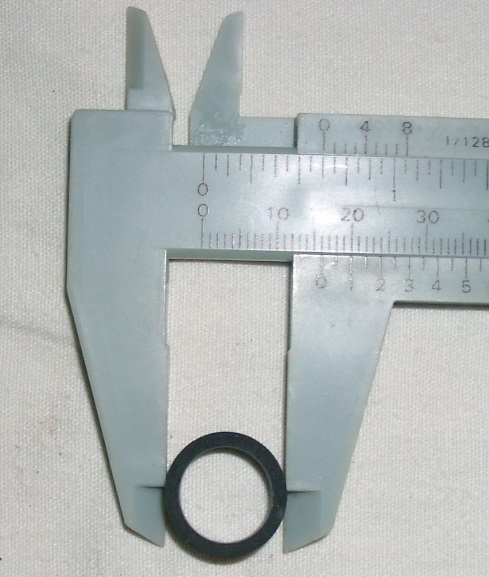 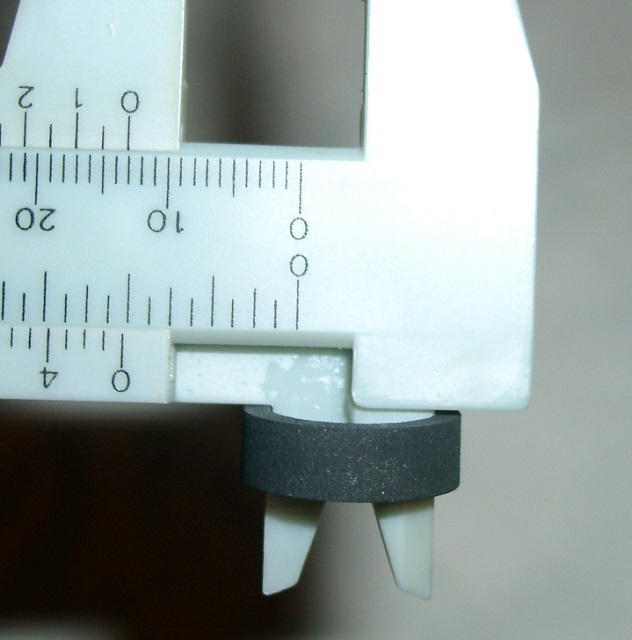 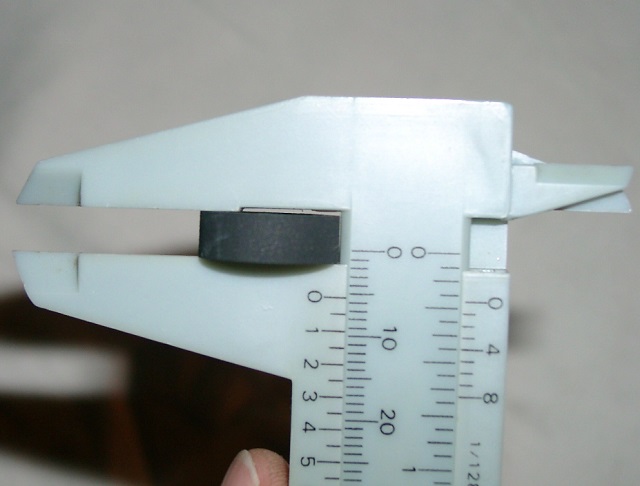 Maybe someone can find a substitute filter cartridge and identify the standard sizes for the filter holding can to lid seal and the small feed pipe to port opening seal. I've tried, and failed. The only thing I've been able to do is identify alternatives to the original (not original dimensions and often requiring a new filter holder if it's not a more conventional inline fuel filter). Brian | ||
David Gore Moderator Username: david_gore Post Number: 2494 Registered: 4-2003 |
Brian and Jim, When I posted the Wix/Crossland equivalent, I was relying on both my memory and past advice from Richard Treacy. Further checking confirms my memory is no longer reliable and I apologise accordingly. * | ||
Patrick Lockyer. Grand Master Username: pat_lockyer Post Number: 1182 Registered: 9-2004 |
David, I to it seems has a failing memory. Time to change the oil and filter not a problem I thought. Opened the oil filler cap and the cork seal fell off. Changed the filter and oil, now where is the roll of cork hours later I found it put in a safe place! 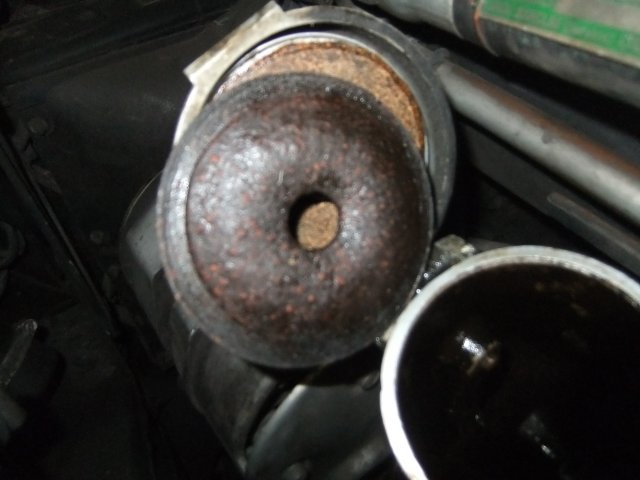 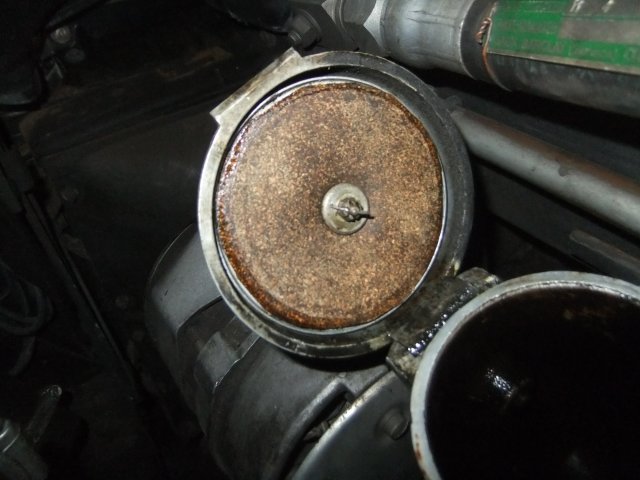 Don't no if this helps but the original RR fuel filter was a Purolator 377. 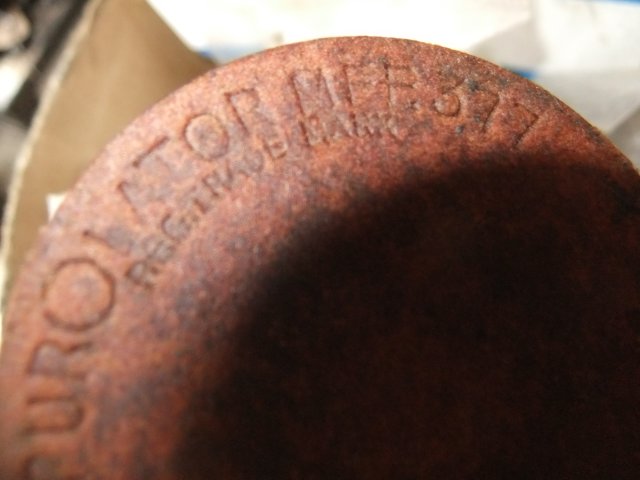 | ||
David Gore Moderator Username: david_gore Post Number: 2496 Registered: 4-2003 |
Patrick, The following thread was found thanks to your post above relating to the Purolator filter. http://au.rrforums.net/forum/messages/17001/18606.html?1441057106 The past availability of a custom-made filter element from Flying Spares gives hope these may still be available. | ||
Jeff Young Grand Master Username: jeyjey Post Number: 333 Registered: 10-2010 |
Last time I did mine I got the Flying Spares aftermarket one, and that was even before the pound sank. ;) Cheers, Jeff. | ||
John Beech Prolific User Username: jbeech Post Number: 268 Registered: 10-2016 |
Patrick, how many miles has your car accumulated since fitting the Iridium spark plugs? | ||
Patrick Lockyer. Grand Master Username: pat_lockyer Post Number: 1183 Registered: 9-2004 |
Hi John. The last run today I came home in the dark but the first run of about 20 miles carried out some shopping for the wife. 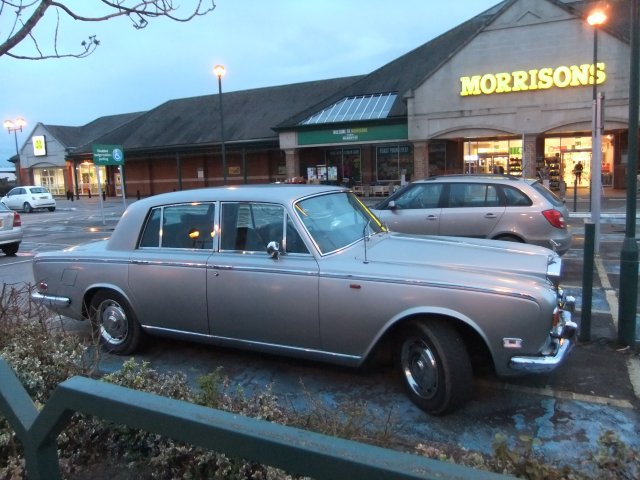 Ran petrol on the first trip and then stopped the engine for 10 mins and then started hot, the car started still on petrol better than with the old plugs. Next run in the dark, this was changed from petrol to LPG on the move once the petrol low warning light came on. 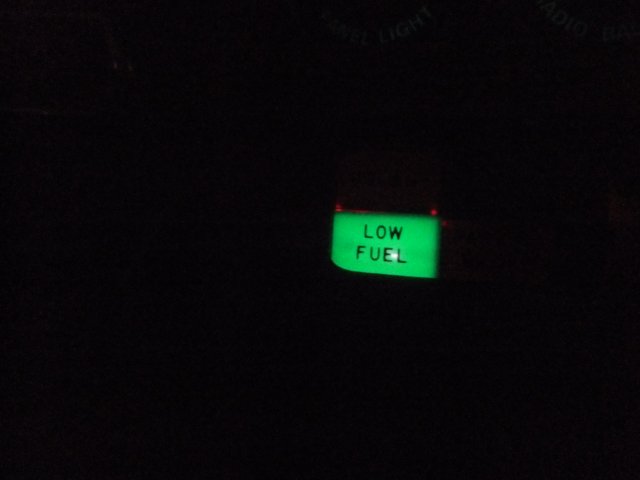 IMO engine slightly more smoother running LPG. The miles clocked up at a far rate of speed. 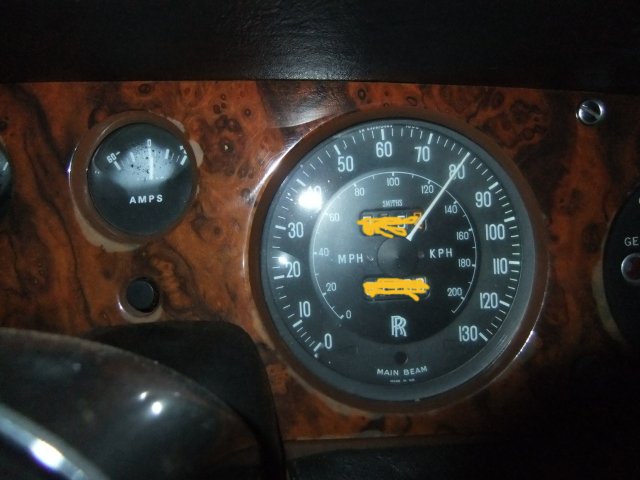 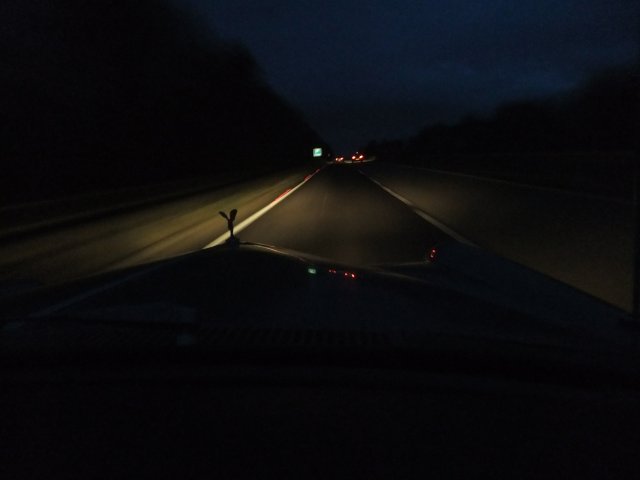 In all the soaked up miles travelled total was about 130 and the car starts ok on LPG hot or cold as it did before. IMO the more use the better with the brakes suspension etc. Another job it to use the air con by the look of the amp meter! | ||
Patrick Ryan Grand Master Username: patrick_r Post Number: 1302 Registered: 4-2016 |
Love that last photo Patrick. | ||
Robert Noel Reddington Grand Master Username: bob_uk Post Number: 1356 Registered: 5-2015 |
The silhouette of the lady makes for a good photo. | ||
John Beech Grand Master Username: jbeech Post Number: 400 Registered: 10-2016 |
Patrick L. regarding the Iridium plug, do you recall the gap? Mine came gapped at 0.040" which is 1.016 mm so I left them alone because they recommended not adjusting them. But now I wonder if I wouldn't have been smarter to close the gap a little bit to 0.035" or 0.889mm. | ||
Mark Aldridge Grand Master Username: mark_aldridge Post Number: 435 Registered: 10-2008 |
John, I use Iridium or platinum plugs on all of my cars (including RR&B), but never regap the plugs. No problems yet ! Mark | ||
Patrick Lockyer. Grand Master Username: pat_lockyer Post Number: 1368 Registered: 9-2004 |
The pre set gap for the NGK Laserline LPG 2 plugs are pre set to the following: "Individual electrode gap With every LPG LaserLine type, the gap between the centre and ground electrodes has been pre-set to 0.80 mm for gas operation. In most cases, therefore, there is no need for manual adjustment." I have found running with these plugs the car has never been such a good starter hot or cold, petrol or LPG. | ||
David Gore Moderator Username: david_gore Post Number: 2566 Registered: 4-2003 |
"John Beech, OK, I see we've hijacked the thread about ethanol so I will start a new one, instead of continuing. Else nobody will ever be able to find the conversation and gain anything useful." Will fix this tonight when I have time to sort the posts appropriately. Much better for everyone to keep posting and I can sort any problems afterwards than having no posts at all  . . Have opened new topic in the General Discussion section of the forum for problems associated with moisture: http://au.rrforums.net/forum/messages/30/27504.html?1496053894 * | ||
Patrick Francis Prolific User Username: jackpot Post Number: 141 Registered: 11-2016 |
Hi All - David, I hope I am on the right thread still- Could I ask for a consensus of opinion about the right plug for my Shadow1 SRH 17968. (petrol not LPG) I have Powerspark electronic ignition installed. I am considering NGK BPR5EIX, and am quite confident about going ahead, only that there has been some suggestion in the past about going one stage hotter or colder for some reason. Any input is welcome..... Thanks Patrick, you are in the appropriate thread. * | ||
Patrick Lockyer. Grand Master Username: pat_lockyer Post Number: 1375 Registered: 9-2004 |
If you do low mileages between plug change, the NGK BPR5ES will be more than adequate. If high milage and long time interval plug change then the BPR5EIX [iridium] are IMO the way to go. Graphite the plug threads for easy removal. | ||
Larry Kavanagh Frequent User Username: shadow_11 Post Number: 74 Registered: 5-2016 |
I fitted NGK BP5RES-11 to my Shadow 11 today and immediately noticed an improvement, engine is running smoother and ticks over nice and quietly. Previous plugs were Delco brand and were very white in appearance on removal, not sure if the fuel mixture was too lean or the plugs were too hot. I'll check again after a few hundred miles and decide then if any remedial action is needed to the carb air/fuel mixture but the SUH1 F7 carbs are factory set and I would be wary of messing with the air screw. |